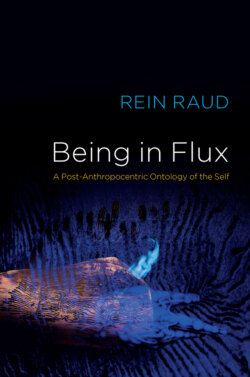Читать книгу Being in Flux - Rein Raud - Страница 8
Notes
Оглавление1 1 I take the distinction between the terms ‘posthuman’ and ‘post-anthropocentric’ from Rosi Braidotti’s work (2013), but I will be attributing a slightly different sense to them. For Braidotti, ‘posthuman’ signifies the rejection of the traditional ‘humanist’ paradigm based on a restricted, Eurocentric and male-centred view of what counts as human (2013: 13–16), while post-anthropocentrism is the upgraded version of this critique that extends, mostly by technological means, its perspective beyond that of the human species, integrating the dimensions of ‘becoming-animal’ (2013: 67ff.) and ‘becoming-machine’ (2013: 89ff.). The two thus form concentric conceptual circles, with posthumanism as the core. For me, ‘human’ signifies broadly all the specifically human contributions to the current state of the world, both good and bad, while ‘post-anthropocentric’ designates an order in which the human point of view no longer forms the natural centre of gravity. Thus, for example, the idea of ‘animal rights’ cannot be a part of the posthuman paradigm, because the idea of ‘rights’ as such is specifically human, but it is nonetheless post-anthropocentric in that it has extended the domain where rights apply beyond the borders of the human species.
2 2 Christopher Powell formulated a similar solution to this problem when he proposed that ‘the concepts of “agency” and “structure” be understood as opposed yet complementary ways of parsing the same phenomena … This is not to say that any given phenomenon has both structural and agential qualities, mixed together. It is to say that any given phenomenon is entirely, completely structured, and at the same time entirely, completely agential’ (2013: 198). However, in his radically relationalist vision, which is very close to mine in most aspects, this dichotomy is not really abandoned, but only reconceptualized in a less explicit form as the opposition between ‘actual’ and ‘potential’ relations, where the latter pre-exist the former and determine the scope of the possible – ‘a relation exists as a potentiality prior to its being actualized through interaction’, Powell writes (2013: 193). Thus, all of what happens has existed previously in virtual form, but not all of what exists virtually will happen. With this, I have to disagree, as it could be argued that a certain order surely has to reign on the plane of potential relations, and that can easily be extracted as a modified idea of ‘structure’.
3 3 Throughout this inquiry, the term ‘real’ will be used in two connected senses: (1) to be real is to be an indispensable part of a causal linkage; (2) to be real is to take place even if unobserved by parties that are affected by that particular causal linkage. This is not to say that airwaves are real, but sounds are not; the claim is that sounds only become real as ‘sounds’ when they reach someone’s ear and elicit a response. Thus, the same happening in the world can be ‘real’ in several different ways, as a part of different causal linkages, depending on the vantage point.
4 4 I will be using the term in a way similar to that of Robert A. Wilson, who constantly emphasizes that a cognitive procedure is not something that spontaneously reflects the world, but ‘an activity that individuals perform in extracting and deploying information that is used in their further actions. It involves an agent enmeshed with the world not prior to or following but in the very act of representing’ (2004: 183–4).
5 5 The privilege accorded to the human perspective has caused a shift in the meaning of the word ‘objective’, from ‘what exists unperceived’ to ‘what exists as perceived by humans also when not perceived by any human’. Needless to say, I will not be using the word in this latter sense.
6 6 I use the word ‘entity’ to refer to singular things extracted from the reality process by something or someone external to them and forming a relationship with them through this act, while the word ‘object’ is reserved for the traditional view of stable, self-identical and continuous things that exist as they are in the world independent of any mind and gaze. As said, I think that discourses relying on the existence of pre-given objects impose a structure on the world that is not really there, but which reifies and naturalizes the human perspective of things as the only correct one.
7 7 Alva Noë, introducing his highly convincing critique of this view, formulates as the doctrinal consensus of most neuroscientists the claim that ‘for every experience there is a neural structure or substrate whose activation is sufficient for the experience’ and therefore ‘experience supervenes on the brain’ (2006: 209). He goes on to show how this view is produced by an unwarranted shift from claiming that experience as a whole is partially dependent on the brain as a whole.
8 8 This is reflected in Aristotle’s theory of change, which is the actualization of a potentiality a thing has in itself that comes about as a result of a contact with an agent of change (Physics III, A201a9–202a13). Consequently, ‘only in a fixed thing-like substratum, which must first be given, can the logical and grammatical varieties of being in general find their ground and real application … The category of relation especially is forced into a dependent and subordinate position by this fundamental metaphysical doctrine of Aristotle’ (Cassirer 1953: 8). While Cassirer (as well as many others) has gone on to point out the incompatibility of this view with modern mathematics and natural science (1953: 36ff.), the Aristotelian view has proved to be remarkably resilient. Thus, Graham Harman, for example, formulates the ‘Rule No. 1’ of his ontology as ‘Things pre-exist their activity rather than being created by it’ (2016: 114).
